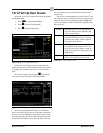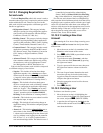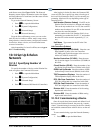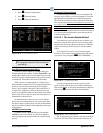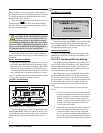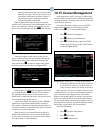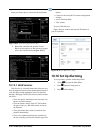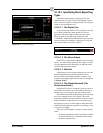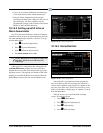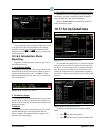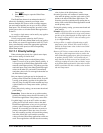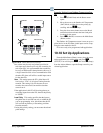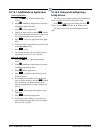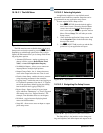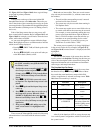
Figure 10-37 - Alarm Setup Menu
Set Up Alarming Quick Start • 10-21
10.16.1 Specifying Alarm Reporting
Types
Apart from storing alarms it generates in its own
Alarm Advisory Log, E2 can also report alarms it gener-
ates or receives in order to notify
personnel. E2 can report
alarms in several different ways.
10.16.1.1 The Display Line
Alarms that occur within an E2 (or which are received
by an Alarm Annunciator from another E2) may be
reported to the header display at the top of the screen.
When an alarm is reported to the display, the word
“*ALARM*” flashes underneath the time at the top of the
screen, allowing site managers or supervisors to see that
one or more alarms are active for the E2.
Figure 10-38 - Display Line
10.16.1.2 The Alarm Output
Each E2 has a single digital output that reacts to alarm
reports. An alarm can be reported to this output, in which
case the output turns ON and remains on until the alarm
condition has returned to normal.
10.16.1.3 Dial-Out
Alarms may be sent to remote alarm receivers via the
modem defined for the controller. Possible dial-out
devices include a PC running UltraSite, a printer, a fax
machine, and a digital pager. Dial-out sites are configured
in Section 10.16.3.
10.16.1.4 The Echelon Network (The
Alarm Annunciator)
If multiple E2s exist on a network, you may choose to
send alarms from all E2s across the Echelon Network so
that they may be picked up by the Alarm Annunciator.
The Alarm Annunciator is the primary alarm reporting
device in
a multiple-device E2 Network. The Alarm
Annunciator gathers all alarms posted by all devices on the
Echelon Network, records them in its own advisory log,
and applies its own set of alarm filters to determine if the
alarms should be dialed out, reported to its display, or sent
to its Advisory Output.
There are several benefits to having an Alarm Annun-
ciator:
• An Alarm Annunciator makes it possible to handle
all alarm dial-outs
for all controllers with a single
modem or network card.



